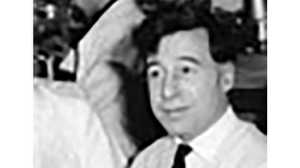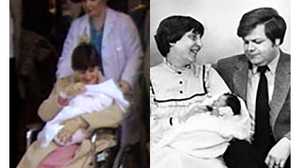Landrum Shettles

Norman Mailer considered his name like something out of a novel — and so, in many ways, was Landrum Shettles’ life. Genius and pioneer, a man both unorthodox and eccentric, he attempted one of the world’s first test tube babies but was never able to achieve success.
Promising Researcher
Shettles grew up poor on a farm in Mississippi, then left the rural life to train as a gynecologist at the medical school of Columbia University. A colleague said he looked like “a larger version of Truman Capote.” Shettles’ great interest was the human egg, and his professional aim was “to try and find out everything I could” about it. His early career was full of promise; in 1951 Shettles duplicated the well known Rock-Menkin experiments in fertilizing eggs, and in 1954 he received the renowned Markle Scholarship, which was awarded to one scientist at Columbia University a year. In 1960 Shettles published Ovum Humanum, a book containing color photographs of the human egg documented as never before, in various stages of development. At that time Shettles may have been the only American doing IVF research, and he had many characteristics of the successful pioneer: he was brilliant, willing to take risks, and completely immersed in his work.
At Odds with the World
But Shettles had other personality traits as well. He was socially awkward, kept odd hours, and virtually lived in his Columbia office furnished with a cot, a large fish tank, and a collection of clocks. He was married with seven children, but work often kept him from home. At the time, a medical student Arthur Caplan saw him as a “geeky guy in the lab who you didn’t hear much from;” fellow doctor Georgianna Jagiello “would see him in the hall … in his scrub greens, at all hours of the day and night,” but had no idea “what his clinical duties were.” Focused on his research, Shettles had little time for office politics, and rarely consulted with those hospital administrators who were supposed to supervise his work. The chairman of Shettles’ department, Raymond Vande Wiele, became so upset with Shettles’ disregard for proper procedure that he demoted him.
The First IVF Attempt
For all his eccentricities, Shettles was still the only man to recommend when Doris Del-Zio asked her doctor if there was any hope of getting pregnant after a series of failed tubal surgeries and attempts at artificial insemination. Shettles had become well known as the co-author of two books on reproduction (one called Your Baby’s Sex: Now You Can Choose ultimately sold more than a million copies). Magazine articles in the early 1970s with titles such as “The Test Tube Baby is Coming” presented Shettles as a man on the cusp of an amazing breakthrough. Now he was willing to try in vitro fertilization with Doris and see if it would work. The attempt began on September 12, 1973, but Vande Wiele halted it before a fertilized egg could be implanted back into Doris. A month later, Shettles was forced to resign from Columbia-Presbyterian Hospital. Within a year, Doris and her husband John sued Vande Wiele and the hospital for “intentional infliction of emotional distress.”
Others Achieve IVF
By 1978, the world’s first test tube baby had been born, the result of work done in England, not the U.S. That event must have affected Shettles deeply. Shettles would later claim that in 1962 he had been responsible for a successful post-IVF pregnancy, but the assertion could never be substantiated. According to author Margaret Marsh, if there was a race between Shettles and British scientist Robert Edwards over who would have the first successful test tube baby, it was a race “Shettles was destined to lose.” Edwards and his collaborator Patrick Steptoe “may have been mavericks in a way, but they were careful mavericks who documented everything they did.” Shettles, by contrast, always worked alone and was never well organized.
Later Years
After leaving Columbia-Presbyterian, Landrum Shettles became head of obstetrics and gynecology at a hospital in Vermont, where his unorthodox research got him in trouble with administrators again. In 1981 Shettles moved to Las Vegas to help set up a human cloning clinic. The clinic quickly failed, but Shettles remained in Las Vegas for the next 20 years. He died in 2003, never having successfully shepherded a test tube baby into the world. Shettles was 93 years old.







